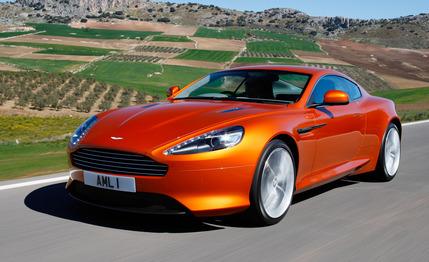 First Drive Review
First Drive Review
In case you’re wondering, “virage” is a French word that means “twist, bend; turn, curve.” It’s a noun, not a verb. But what the word seems to mean in the exclusive dialect of Aston Martin automobiles is, “V-12 GT priced between the DB9 and DBS.”
The Virage and the two DB cars share the same architecture, versions of the same V-12 engine, and the same general styling—that last bit being something that can be said of all Astons except the Cygnet. Aston pitch people tell us that the distinction between DB9, Virage, and DBS is that each is tailored to meet “the needs of its owners.” What our jaundiced ear hears is that the Virage is for the buyer who imagines he needs something a little fancier than the DB9, but also needs to avoid the vast financial leap to the DBS.
Wants and Needs
Wants and needs get to be interchangeable at this price, so we’ll spell it out in terms we can all understand. DB9 pricing starts at $189,230. The base price for the DBS is $273,275. The numbers go up from there, culminating with the DBS Volante (convertible) with automatic transmission at a resounding $290,954.
You don’t need to be an MIT mathematician to see the gap in those numbers. Does it represent an actual yawning hole in Aston’s lineup, one through which potential customers might flee? Seems unlikely to us, but that’s the gap the Virage is intended to plug. It will start at $211,610 ($226,610 for the Volante) when it reaches U.S. dealers sometime in late June as a 2012 model.
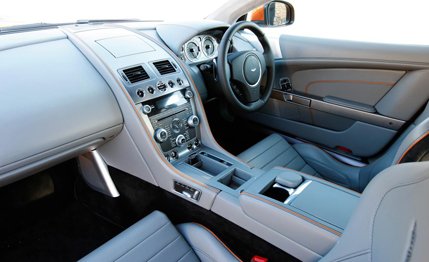
The Car
It takes an eye keenly sensitized to Aston Martin nuance to distinguish a Virage from its DB stablemates. The grille, front bumper, and headlights are new—albeit familiar—and the side strakes shimmer with LEDs. The shape of the rocker panels has been fine-tuned, and a new diffuser spans the car below the rear bumper.
Inside, there’s a sumptuous festival of aluminum, carbon fiber, walnut, and Bridge of Weir leather—seven hides in all—beautifully designed, beautifully stitched, tantalizing to the olfactory sense as well as the eyes and fingertips. Aston claims that the interior of each car represents 70 man-hours of painstaking hand work, to which we say, “Is that all?” This is craftsmanship raised to the level of art.
Gorgeous interiors have been an Aston Martin strong suit for quite some time, just as tiny interiors have been a weakness. Like the DB9 and S, this coupe is technically a 2+2. But one look over our shoulders makes us wonder, plus two what? Elves?
Hardware
Not surprisingly, the structure beneath that voluptuous sheetmetal is familiar. Like the DB9 and DBS, the Virage is built around a bonded-aluminum architecture with the rigidity of an aircraft-carrier flight deck.
The Virage rolls on 20-inch aluminum wheels wearing low-profile Pirelli P Zero tires; 245/35s up front, 295/30s out back. Spring rates and bushings are specific to the Virage, with rates somewhere between those of the DB9 and DBS, and damping is provided by a new Bilstein adaptive system with presets in two modes, Normal and Sport. As on the DBS, braking is provided by a Brembo carbon-ceramic package, with big, vented rotors—15.7-inch front, 14.2-inch rear—squeezed by six- and four-piston calipers, respectively. Stopping power galore is a good thing in a two-ton GT capable of a claimed 186 mph.
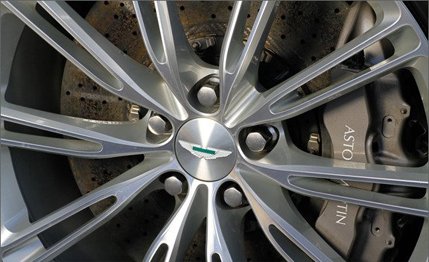
The source of that top-speed capability is Aston’s thoroughly familiar 5.9-liter aluminum V-12. In this application, it’s tuned for 490 hp and 420 lb-ft of torque—20 more ponies than the same engine in the DB9, 20 fewer than the DBS’s output. The only available transmission also is shared with the DBs: the six-speed ZF Touchtronic II paddle-shifted automatic.
At Speed
Big asterisk here: Speed is always a function of conditions. During our short day with the Virage on mountain roads in the south of Spain, conditions ranged from rain to sleet to snow—perfect for wringing out a powerful GT on fat summer tires. It was a prescription for caution, but we were able to make a few observations.
The V-12 gives up lots of power to other players in the Virage’s competitive realm—think Ferrari 458 Italia, Mercedes SLS AMG, and Porsche GT2 RS (to say nothing of the 638-hp Corvette ZR1, at a mere $112,050)—but it’s torquey, willing, and smooth. In formal evaluation—a comparison between the DBS and Ferrari 599GTB—this engine powered the DBS to 60 mph in 4.3 seconds and through the quarter-mile in 12.6 at 117. The Virage is a little heavier than the carbon-fiber intensive DBS—about 200 pounds coupe to coupe, according to Aston Martin—and it’s down 20 horsepower. Figure on a 0-to-60 time of 4.5 seconds and a quarter-mile of 12.9.
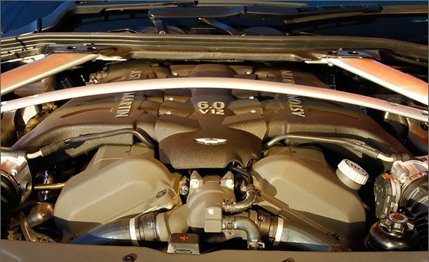
If the engine is satisfying in spite of its moderate competitiveness, it’s hard to be enthusiastic about the Virage’s automatic transmission. We can’t call its responses slow, and they’re distinctly more eager in Sport mode than the default Normal. But for anyone who’s operated any of today’s better automated manuals, Aston’s Touchtronic is distinctly ho-hum.
At the end of a cold, slippery day, we emerged impressed by the Virage’s eager transient responses, controlled body motions, and communicative steering. The Virage may not be as fast as some of the cars in this price sector, but its combination of stiff structure, control-arm suspension, and adaptive damping add up to athletic credentials of a very high order. Like other Astons, the Virage is well balanced—the engine is mounted as far back as possible to help achieve the car’s 50/50 front/rear weight distribution—and its basic handling trait is mild understeer, which was not unwelcome in dicey conditions. Still, we look forward to some seat time in the dry.
Competent Exclusivity
So what’s the hook? Not absolute performance; there are several entries in this pricey realm that outperform the Virage. And some might say that the styling, which is more or less repeated across almost the entire Aston Martin lineup, has become a little too familiar.
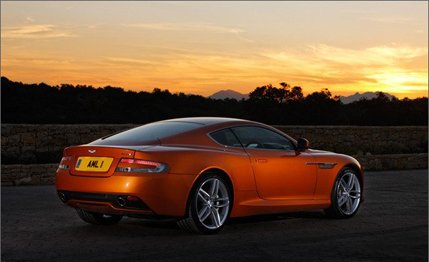
Recognizable or not, though, the shape still turns heads. And for the man who values performance but is an unlikely candidate for track days, the Virage is certainly fast and athletic enough to be satisfying. Beyond that, there’s the pleasure that goes with owning something hand-built, exquisitely crafted, and exclusive. As for the Virage being worth the $22,000 premium over a DB9, why not? At this price point it gets tough to judge worth; but for just a 12-percent price hike, the Virage offers slightly better performance, a slightly nicer interior, and a slightly more-exotic shape—not to mention a unique name.